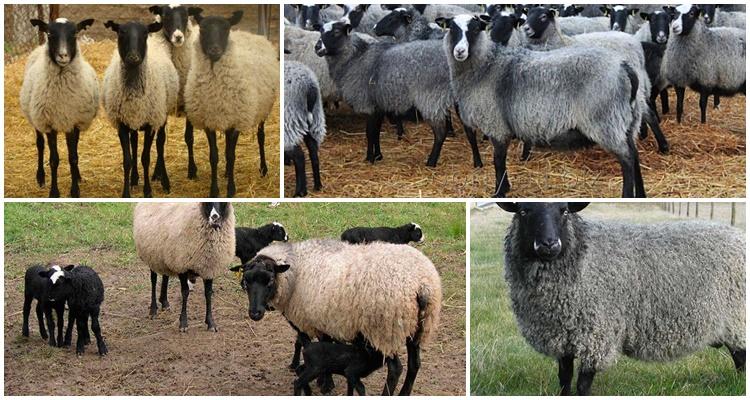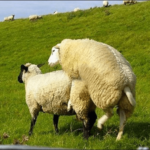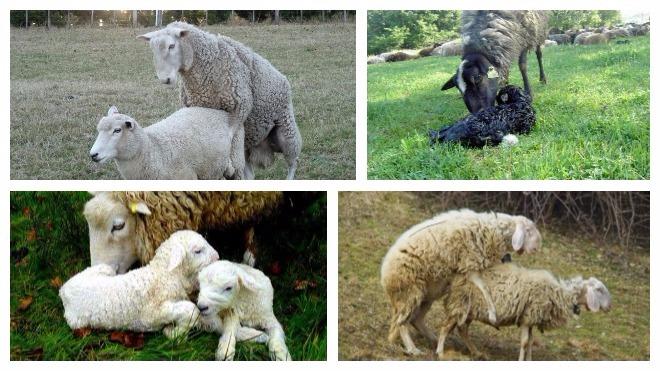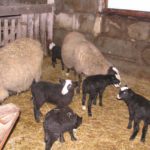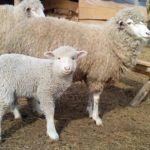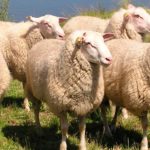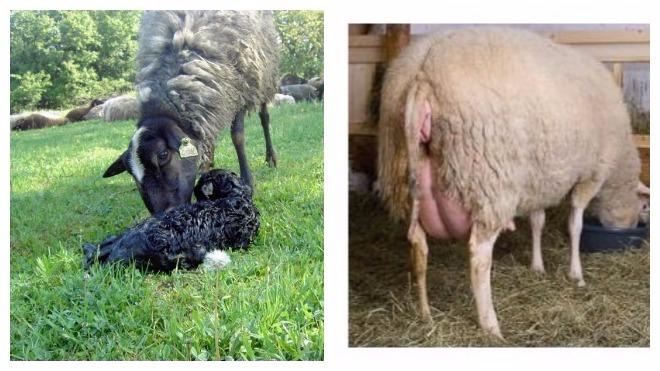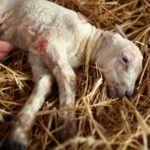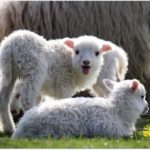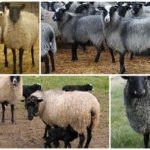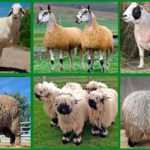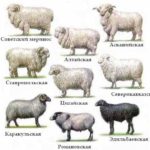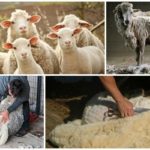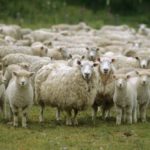Raising sheep is one of the most profitable branches of the livestock business. If properly organized, breeding and raising these animals can be profitable. To be successful, you need to know the timing and rules of sheep mating, how to select and prepare a sheep and ram for mating, how to care for a pregnant female and a newborn lamb.
Reproductive age of sheep
Female sheep reach sexual maturity at 7 months, but this is an approximate time as this age may vary depending on the breed.However, even if the animal has theoretically already reached puberty, it is still impossible to conceive, since its body is not yet able to normally bear a lamb. It can happen that when the female becomes older than 1 year, her weight will be at least 40-45 kg. In rams, sexual maturity occurs at 5-7 months. But, like the female, the male can be used for breeding later, when he is 16-18 months old.
So, a sheep can be born starting from 1 year, a ram - from 1.5 years. In this case, animals must be normally developed and moderately well-fed.
Rules for choosing a sheep
Age has already been mentioned, but it is also important to take into account the weight of the animals; females should not be thin or, conversely, obese. Both of them do not feel the desire to mate; they may remain single or produce weak offspring.
Sheep of many breeds come into heat at a certain period of the year, which lasts from late summer to mid-winter.
Animals of the Romanov breed can be found throughout the year. Typically, the female hunt lasts 2-3 days, and it is at this time that they should be allowed closer to the male. You can determine the readiness of sheep for mating by their behavior - they are worried, bleating, calmly related to the ram, as well as by physiological signs: swelling and redness of the genitals, mucus flowing out of them, first transparent and liquid, then cloudy and thick. If fertilization does not occur after mating, the female comes into heat again after 16-20 days.
Subtleties of ram selection
The ram must be young, strong, healthy, and well-nourished. It is these individuals that actively reproduce. How well he will be able to inseminate sheep depends on the conditions in which he is kept and how he was cared for.During preparation for the mating season, the ram needs to be fed properly; the diet must include foods rich in vitamins and minerals.
If the male is active, he is considered ready for mating. If there are a lot of sheep on the farm, 10-20 females can be allocated per ram.
Insemination methods
Sheep can be inseminated naturally or artificially. In the household, the first of them is used almost exclusively.
Natural
Mating should be carried out either during the day and the sheep should be taken away from the ram at night, or, conversely, the female should be left with the male for the night and taken back in the morning. There are several options for natural insemination:
- Cool match. For 30-40 days, rams are introduced into the flock of sheep (2-3 rams per 100 females). The animals are left together during the day, and the rams are removed at night.
- Free mating. The ram is kept together with females, the animals mate for a long time. The disadvantage of this method is that the sheep may remain single.
- Harem mating. The method is used in livestock breeding. For 30-40 sheep, 1 male is selected. He is kept with females only during the day, removed from them at night and fed with nutritious food.
- Manual mating. Ewes only happen to rams when they are in heat. This increases the fertilization rate. The rest of the time the male is separated from the females.
As you can see, you can choose any of these methods if the number of individuals in the home herd allows. With natural manual mating, sheep breed most successfully and rarely remain single.
Artificial
Artificial reproduction is a method in which not a ram is used to inseminate sheep, but sperm, which is injected into the female’s vagina using a special device. The advantage of this method is that less seed material is consumed than during natural reproduction, since both pure and diluted sperm can be used. When artificial propagation it is important to observe sterility, dosage of seed material and rules of procedure.
Calculation of lambing time and methods of accelerating/decelerating heat
Heat occurs in sheep when the gametes mature in the ovaries. Its duration depends on seasonality, the health of the animal, its age and breed. Duration ranges from 0.5 to 3 days. Ovulation occurs 30-32 hours after the onset of estrus. Usually it is not always possible to accurately determine the beginning of heat, so it is recommended to calibrate sheep 2 times: as soon as signs of estrus appear and a day later. As a rule, this is enough for fertilization to occur.
To speed up the onset of heat, sheep should be left in a darkened room for 2-3 hours for several weeks in a row. Thanks to this method, animals can come into heat 1-1.5 months earlier than they should for the season.
To more effectively accelerate and slow down the process, hormonal drugs are used. They are used together with vitamins and cow's colostrum.
Preparing for lambing
Sheep pregnancy lasts 143-153 days. Animals are usually bred in the fall so that lambs are born in the spring, when it is already warm and the grass is green. 2-3 days before lambing, the female’s udder and genitals swell, and her belly sags a little. Just before giving birth, the female begins to dig the litter.
Sheep birth process
Sheep give birth to 1 to 3 lambs. If the animal is healthy and the birth takes place without complications, there is no need to help him. However, it is advisable that a veterinarian be present on the farm at the time of birth in case of problems or complications. It is not always possible to help an animal on your own; this requires knowledge and certain experience.
Lambing lasts no more than 1 hour. If there is more than one lamb, the interval between them is approximately 10-15 minutes. The afterbirth comes out 0.5-3 hours after the appearance of the last lamb; it must be removed along with the bedding and disposed of. If more than 6 hours have passed and the placenta has not come out, you need to contact a veterinarian. As soon as the lamb is born, you need to clear its nose of mucus and, if the mother has not chewed the umbilical cord, cut it with sterile scissors at a distance of 10 cm from the lamb’s belly and treat it with iodine. After this, the female must lick the lamb.
After the birth is over, you need to give the mother warm water to drink, you can feed her after 4-9 hours. You also need to make sure that the lamb drinks colostrum within the first hour after birth (the first portion needs to be expressed, this colostrum is too fatty). Then remove the newborn from the mother and bring her to her only for feeding (in the first days with an interval of 3 hours).
Newborn care
During the week after lambing, you need to monitor the female, make sure that the uterus is cleaned and there are no complications, which include infections, for example, postpartum paresis.
If a ewe does not have enough milk for all the lambs she has, they need to be fed with the milk of another female or, in extreme cases, with cow's milk.Cow's milk is thinner, so you will need more of it than sheep's milk. Sheep feed their babies milk for 3 months; young animals, if they grow in good conditions, receive plenty of milk, grow quickly and gain weight. When the lambs are 3 weeks old, they can begin to be fed the same food that adult animals eat.
Breeding and raising sheep can be a profitable business if it is managed correctly. Mating, pregnancy and childbirth of sheep occupy not the last place in the livestock production process. The success and profitability of sheep breeding depends on how and when mating is carried out, how the care of pregnant animals will be organized and how the birth will take place.
With good care, each healthy ewe can produce lambs 1-2 times a year. If you consider that you can get 1-3 lambs per lamb from one individual, the animals will quickly pay for themselves and the farm will become profitable.

